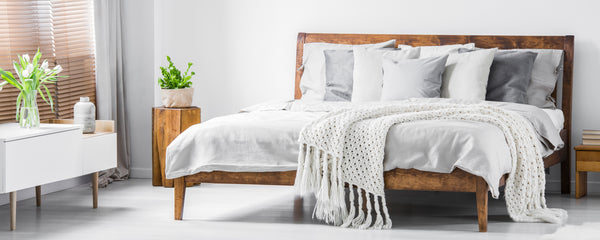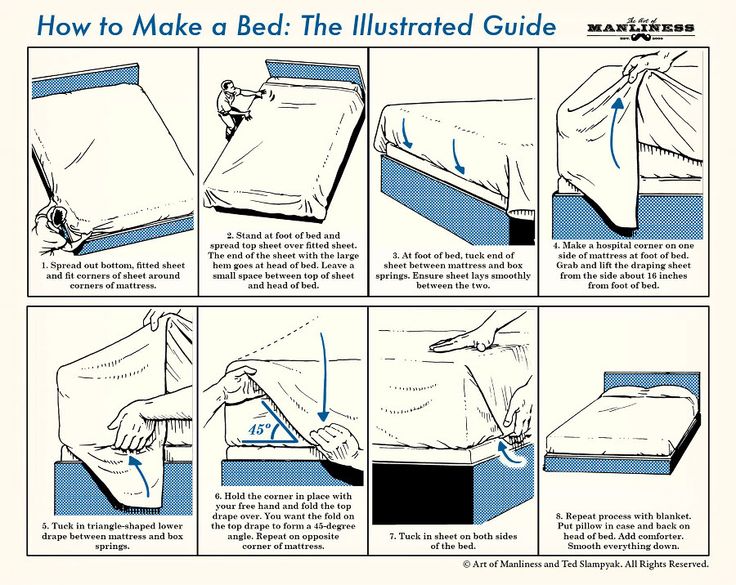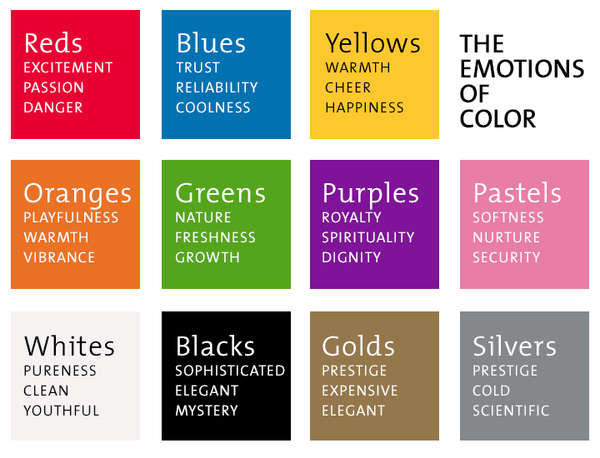
"If you make your bed every morning you will have accomplished the first task of the day. It will give you a small sense of pride, and it will encourage you to do another task and another and another. By the end of the day, that one task completed will have turned into many tasks completed. Making your bed will also reinforce the fact that little things in life matter. If you can't do the little things right, you will never do the big things right. And, if by chance you have a miserable day, you will come home to a bed that is made — that you made — and a made bed gives you encouragement that tomorrow will be better. If you want to change the world, start off by making your bed".
Perfect Corners
Corners are the key to a well made bed. Whether you like your sheets pulled tight, or a bit looser, knowing what you're doing at the corners of your mattress is the key to a perfectly made bed. As with all things, it's best to visualize. Take a look at the image below for instructions on creating perfect corners. Remember, if you prefer your sheets a bit looser, just leave a bit of slack by not pulling the top sheet all the way taut.
If you're not a top sheet kinda-guy, don't fret. Skip the top sheet and move straight to the blanket or comforter. Every man has his own preferences, find out what you like best, and execute based on your choices.
Blanket? Comforter? Duvet? Quilt?
Too much terminology. Such is life. How do you choose between all the options for "that thing that will keep you warm at night"? Know the differences, and make a decision based on personal preference, and season. You've likely experienced a night's sleep in all these varieties of bed coverings. You may even own all of them.
A duvet is a soft, puffy covering that is traditionally filled with down or feathers. Normally, there will be some stitching to ensure the contents don't all shift to one end of the duvet. This is a warm option that is great for use in colder weather, though you can use it year round. You don't just throw a duvet on and call it a day, however. Duvets require a cover, known as (you guessed it) a duvet cover. Duvet covers are washable, duvets themselves should only be dry cleaned. What's great about duvets is that you can have a few different covers, allowing you to mix and match the styles of your bedspread.
A comforter is similar to a duvet, the main difference being that a comforter is normally purchased as part of a matching set of bedding. Comforters don't have covers. They are like duvets, soft bags filled with a fluffy material, in this case, usually a synthetic fiber. Some comforters can be machine washed, others can't - read your labels people. In general, comforters are just as warm as duvets, but you can't change the look of them, so if you're the type of person that likes to change things up, maybe choose a duvet.
A quilt is a three layered covering composed of a decorative top layer of fabric, a very thin layer of insulating material (usually synthetic), and a fabric backing. The three layers are quilted together, making this a light, yet sturdy option. Quilts are a summertime favorite, due to their thin composition and lack of materials like wool or down. Quilts can usually be machine washed.
Lastly, blanket is sort of a general term. Duvets, comforters, and quilts are all types of blankets, though there are other kinds as well. A blanket is simply a rectangular piece of material used for covering while you sleep. You can find lots of different materials used for blankets, such as wool, cotton, polyester, etc. The material dictates the usage - a wool blanket is a great option for a very cold night, but make sure to use a top sheet under there or you'll be scratching yourself silly.
Personal Touches
Now you know how to get those hotel type corners on your bedspread. How about the spread itself? The two most important factors here are color and texture. What is the overall color palette of your bedroom? If you don't already have one, figuring it out now will make life easier. Your bedspread, artwork, paint, and floor coverings should all follow a predetermined color scheme. This makes for a harmonious environment.
Color matters. Colors normally associated with bedrooms are whites, greens, pinks, and purples. These colors represent milder emotions which can lead to an enhanced sleep. It's your room though - If you want your bedroom to have a more passionate feel, choose red. It's up to you.
More Bed Making Tips
Do you steer clear of duvets because the covers are hard to put on? Here's a great video making the whole process simple:
A word on throw pillows - They're not necessary if you don't like them. Don't let anyone tell you throw pillows are necessary. You're just going to toss them on the floor at night anyway. If you have guests over and like the look of them, keep some stashed away and add them to your bedspread when you want to make a good impression.
Advice on pillowcases: Change them at least once a week. Your pillowcase builds up lots of bacteria through the night. Between saliva and facial oils, your pillowcase becomes a major contributing source of acne. Make sure to utilize a men's face wash every night before bed. If you struggle with acne, try changing out your pillowcases more often.



Comments (0)
Back to Blog